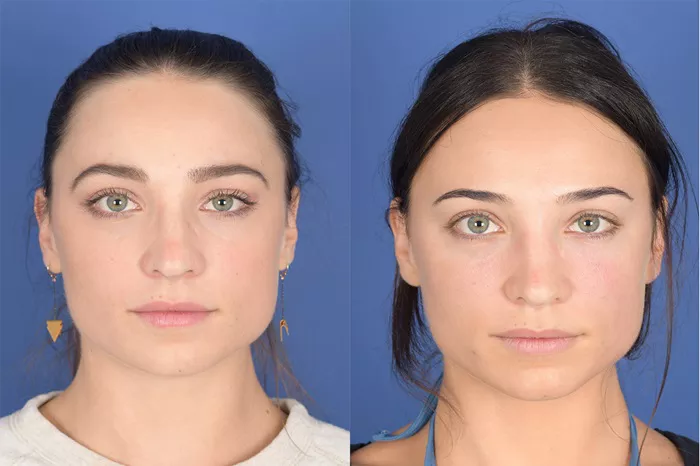Rhinoplasty, commonly known as a nose job, is a popular cosmetic procedure sought by many for both aesthetic and functional reasons. If you’re considering a nose job in Alberta, understanding the costs involved is crucial. This article provides a detailed breakdown of the factors influencing the cost of a nose job in Alberta, along with an overview of what patients can expect throughout the process.
Understanding Rhinoplasty
What is Rhinoplasty?
Rhinoplasty is a surgical procedure aimed at reshaping or correcting the nose. It can address issues such as:
Aesthetic Enhancements: Altering the shape, size, and overall appearance of the nose.
Functional Corrections: Improving breathing difficulties caused by structural abnormalities.
Types of Rhinoplasty
Open Rhinoplasty: Involves making an incision on the columella (the tissue between the nostrils) for better access to the nasal structures.
Closed Rhinoplasty: All incisions are made within the nostrils, leaving no visible scars.
Revision Rhinoplasty: Performed to correct or improve results from a previous rhinoplasty.
Filler Rhinoplasty: Non-surgical option using dermal fillers to alter the nose’s shape temporarily.
Factors Influencing the Cost of a Nose Job in Alberta
Surgeon’s Expertise
The experience and reputation of the surgeon play a significant role in the cost. Highly skilled surgeons with a proven track record may charge higher fees.
Location of the Clinic
The geographic location of the clinic can impact the cost. Clinics in urban areas or affluent neighborhoods may have higher prices compared to those in smaller towns.
Type of Rhinoplasty
The complexity of the procedure affects the cost. For example:
Open vs. Closed Rhinoplasty: Open rhinoplasty tends to be more expensive due to the extensive work involved.
Revision Rhinoplasty: Generally more costly because it requires correcting previous procedures.
Filler Rhinoplasty: Usually the least expensive since it’s non-surgical and temporary.
Anesthesia Fees
Anesthesia is a crucial part of the surgery, and its cost depends on:
1.The type of anesthesia used (local vs. general).
2.The duration of the procedure.
3.The fees charged by the anesthesiologist.
Facility Fees
The cost of using the surgical facility, including operating room fees, equipment, and staff, can vary significantly.
Pre- and Post-Operative Care
Consultations, medical tests, and follow-up visits contribute to the overall cost. Comprehensive care plans ensure a smoother recovery but may add to the expense.
See also: How Much Is A Nose Lift In The Philippines?
Average Cost of a Nose Job in Alberta
General Cost Range
In Alberta, the cost of a nose job typically ranges from $6,000 to $15,000. This variation is influenced by the factors mentioned earlier.
Breakdown of Costs
Surgeon’s Fees: $4,000 to $10,000
Anesthesia Fees: $800 to $2,000
Facility Fees: $1,200 to $3,000
Pre- and Post-Operative Care: $500 to $1,000
Additional Costs
Medication: Pain management and antibiotics.
Medical Tests: Blood work, imaging, etc.
Revision Surgery: Additional procedures, if necessary.
Choosing the Right Surgeon
Research and Referrals
Credentials: Ensure the surgeon is board-certified and has specialized training in rhinoplasty.
Experience: Look for a surgeon with a substantial number of successful procedures.
Reviews: Read patient testimonials and reviews to gauge satisfaction levels.
Consultation
Initial Meeting: Discuss your goals, expectations, and potential risks.
Cost Estimate: Request a detailed breakdown of the costs involved.
Before and After Photos: Review the surgeon’s portfolio to understand their work.
Insurance Coverage and Financing Options
Insurance Coverage
Rhinoplasty may be covered by insurance if it’s medically necessary, such as for correcting a deviated septum or addressing breathing issues. Cosmetic rhinoplasty, however, is usually not covered.
Financing Options
Payment Plans: Many clinics offer installment plans to make the procedure more affordable.
Medical Loans: Specialized loans for medical procedures can help manage the cost.
Credit Cards: Some patients use credit cards, but it’s important to consider interest rates and repayment terms.
Preparing for Rhinoplasty
Pre-Operative Instructions
Medical Evaluation: Comprehensive health assessment to ensure suitability for surgery.
Avoid Certain Medications: Blood thinners and other medications that can increase bleeding.
Lifestyle Adjustments: Quit smoking and avoid alcohol to promote healing.
Day of Surgery
Arrival at the Facility: Arrive early to complete any necessary paperwork.
Pre-Surgical Preparation: Final consultation with the surgeon and anesthesiologist.
Recovery and Post-Operative Care
Immediate Recovery
Hospital Stay: Most patients can go home the same day, but some may require an overnight stay.
Pain Management: Prescribed medications to manage discomfort.
Long-Term Recovery
Swelling and Bruising: Common and will gradually subside.
Follow-Up Visits: Regular check-ups to monitor healing.
Activity Restrictions: Avoid strenuous activities and follow the surgeon’s instructions.
Results
Initial Results: Visible once swelling subsides.
Final Outcome: May take up to a year to fully appreciate the final shape of the nose.
Conclusion
Rhinoplasty is a significant investment in both time and money. Understanding the costs involved and choosing the right surgeon are critical steps toward achieving the desired outcome. In Alberta, the cost of a nose job varies widely based on several factors, but with careful planning and consideration, you can achieve satisfying results. Always consult with a qualified and experienced surgeon to discuss your goals, expectations, and any concerns you may have.
Related topics:
How Much Is A Nose Job With Dr. Richard Zoumalan?
How Long Is Nose Numb After Rhinoplasty?
Best Age To Get A Non-Surgical Nose Job


